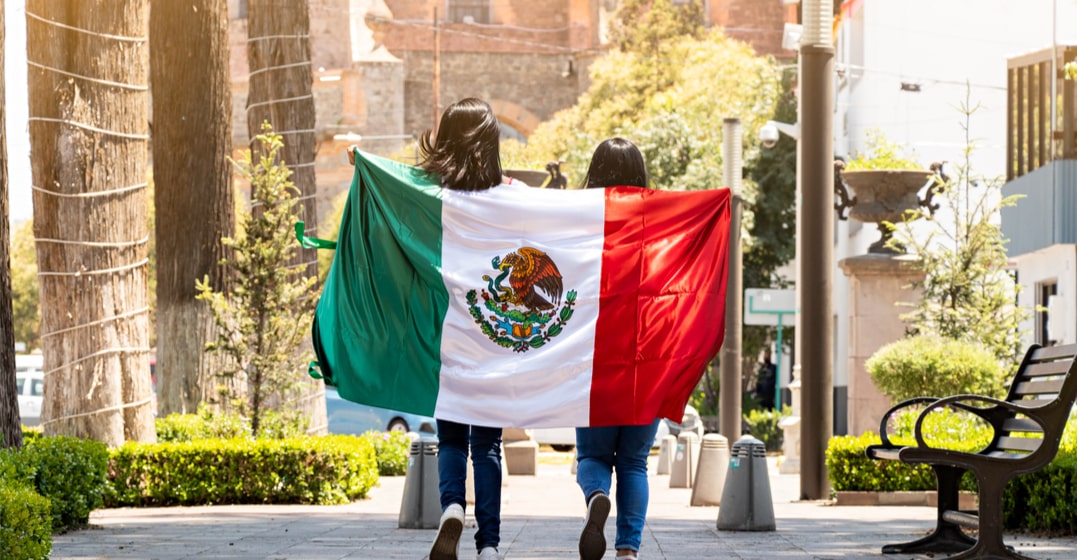Updated on October 9, 2024

What languages are spoken in Mexico?

The vast majority of the Mexican population is monolingual in Spanish, like much of Latin America. Still, Mexico is the largest Spanish-speaking country in the world, bringing vast Spanish language influence to the United States. In fact, as of June 2022, the Spanish language took the top spot as the most popular language that English speakers learn online, according to language learning statistics from Ling.
Over 120 million Spanish speakers reside in Mexico, while 6% of the country speaks an indigenous language.
This article will explain:



Mexico uses Spanish in most of its government proceedings, but it also recognizes 68 other national languages. The languages besides Spanish represent the most widely-spoken languages of Mexico’s indigenous communities.
Now that you know about all 69 official languages there are in Mexico, why so many?
In 2003, the Mexican Congress approved the General Law of Linguistic Rights of the Indigenous People. It gave each indigenous language equal status with Spanish.
You may think 68 indigenous languages are a lot. How many different languages are there in Mexico in total?
If you count dialects and variations, the actual number is around 345. More than 130 have vanished due to lack of use as generations pass away. This fate can affect unique cultures and traditions.
The law shows Mexico’s focus is now preservation. This is why a single official language is no longer viable.
So why is Spanish Mexico’s most spoken language?
A Spanish conquistador Hernán Cortéz is mostly to blame. His expeditions at the beginning of the 16th century caused the fall of the Aztec Empire.
This marked the beginning of Spanish rule over today’s Mexican territory. A long process of colonization began and Spanish gradually became the primary language. The legacy of colonialism is most obvious in the persistence of the Spanish language.
Mexico’s rich culture is the legacy of the Mayans and Aztecs, along with other indigenous civilizations in the region. You can see pre-Columbian ruins throughout Mexico, such as the Mayan Pyramids and the Aztec city of Teotihuacán. You can hear indigenous words in everyday speech in much the same way.
With so many dialects, what are the top 3 languages spoken in Mexico? The top 3 languages spoken in Mexico are Spanish, Nahuatl and Yucatec Maya.
Spanish is the go-to language as it’s spoken by roughly 94% of the population. No surprise there.
The runner-up is Nahuatl. It was the native tongue of the Aztecs. Nahuatl has more than 1.7 million speakers today. Ever heard a word in Nahuatl? I’ll give you a hint: “the food of gods”. Chocolate, indeed.
The third most common language in Mexico is Yucatec Maya, spoken by around 850,000 people. It is also considered the oldest in the country, dating back to 200 AD.
Some other native languages in Mexico today are: Chol, Totonaco, Mazateco, Mixteco, Zapoteco, Otomi, Tzotzil and Tzeltal.




English is the most widespread non-native language used in Mexico. Around 10% of the population speaks English at different levels of proficiency.
The percentage is higher in the northern areas due to the proximity to the United States. Visitors are fine with English in the tourist regions, such as Cancun and San Miguel de Allende.
In Mexico City and other big cities, quite a few people are fluent in English. English is often a prerequisite for employment, especially in industries like tourism.
Italian, Portuguese, French and Greek are also spoken by Mexican populations.
When we refer to the Mexican language, we’re really talking about Spanish.
As with Spain and other Latin American (LatAm) countries, Mexican Spanish is just a different version, not a distinct language. People who speak Spanish around the world can all understand one another.
When it comes to pronunciation, the most notable difference is the ‘seseo’ in Mexican and LatAm Spanish and ‘ceceo’ in European Spanish. This means that Mexicans and LatAm people pronounce ‘s’,‘z’,‘ce’ and ‘ci’ the same. They all sound like /s/. Spaniards pronounce them like a voiceless /th/.
| Spanish Word | Mexico | LatAm | Spain |
| Gracias (thank you) | /gra-see-as/ | /gra-see-as/ | /gra-thee-as/ |
| Cerveza (beer) | /ser-ve-sa/ | /ser-ve-sa/ | /ther-ve-tha/ |
| Ciudad (city) | /siu-dad/ | /siu-dad/ | /thiu-dad/ |
Regarding vocabulary, you will come across many differences between Mexican, LatAm and Spanish variations.
While most Spanish words are universal, Mexican slang is a world of its own. Mexican Spanish is influenced by the native languages that existed at the time of the Spanish conquest and also borrows modern English words.
| English | Mexico | LatAm | Spain |
| Computer | Computadora | Computadora | Ordenador |
| Pen | Pluma | Lapicera (Argentina) | Bolígrafo |
| You (plural) | Ustedes | Ustedes | Vosotros/as |
Mexico is a fascinating country rich in culture, traditions and linguistic diversity. Although there are 69 official languages, Spanish is the de facto national language.
Mexican Spanish is considered one of the most polite and easy to understand of all Latin American dialects.


